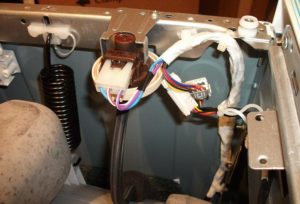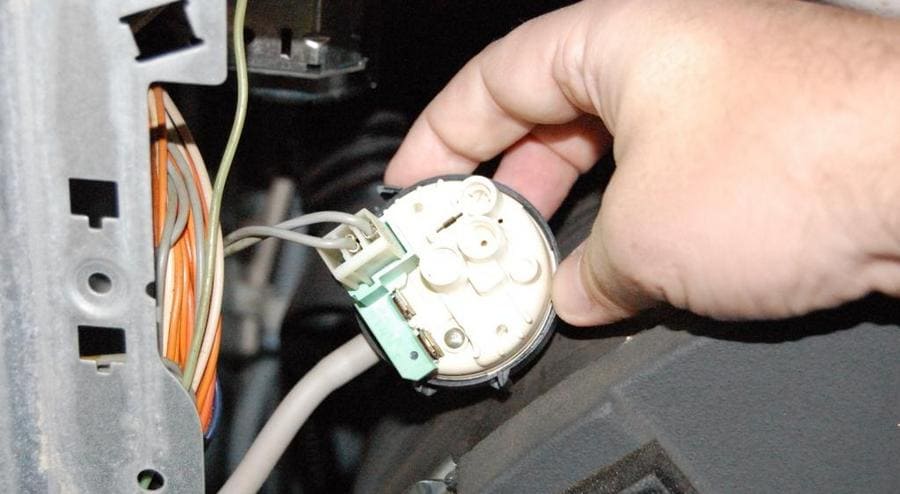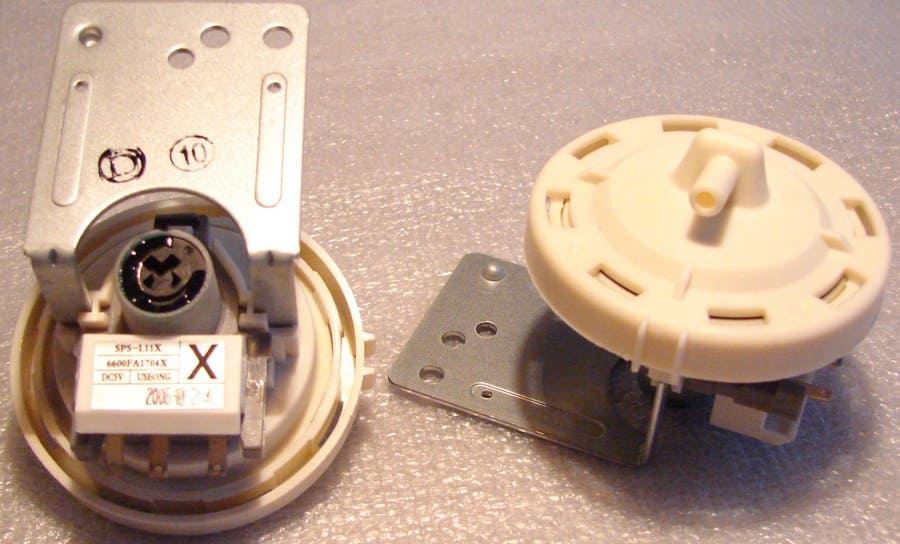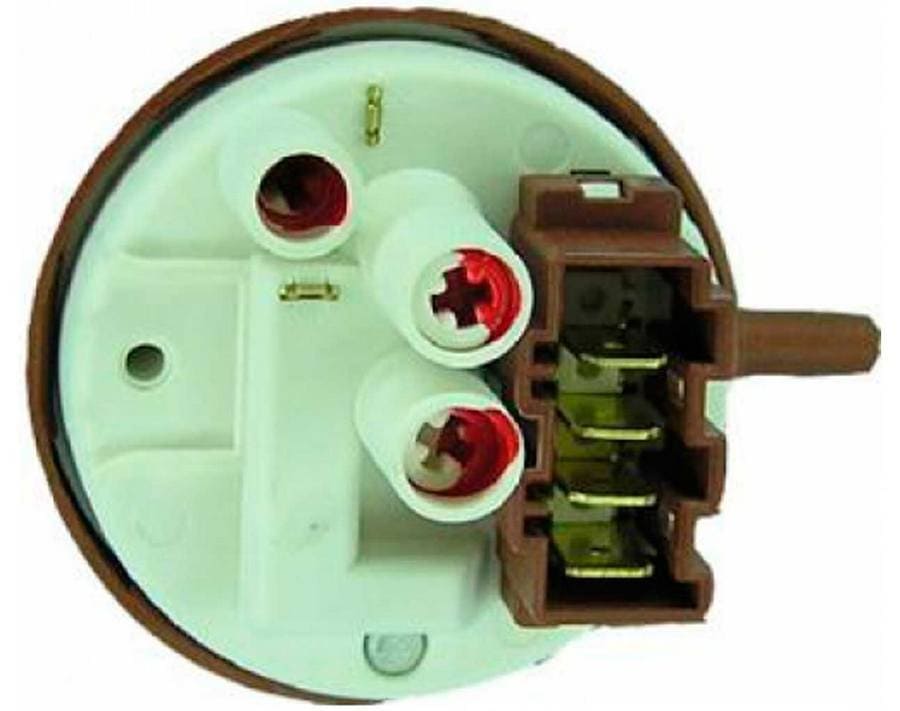 The pressure switch, also known as a water level sensor, controls the amount of liquid in the tank and determines when it is necessary to stop the supply. If it is damaged, the machine will not know whether it needs to add water and, if so, to what level. It is easy to replace a broken fill sensor yourself if you know how it functions and where it is installed, as well as how to check the pressure switch of a washing machine yourself.
The pressure switch, also known as a water level sensor, controls the amount of liquid in the tank and determines when it is necessary to stop the supply. If it is damaged, the machine will not know whether it needs to add water and, if so, to what level. It is easy to replace a broken fill sensor yourself if you know how it functions and where it is installed, as well as how to check the pressure switch of a washing machine yourself.
Operating principle and location of the pressure switch
In washing machines, a pressure switch is used to determine the water level and control its quantity. The device operates under pressure and is usually located on top of the tank to avoid direct contact with the liquid. Much less often, the manufacturer installs the sensor below, under the tank.
A pressure switch is a small plastic part with a round shape. It communicates with the tank through a tube, and is connected to the control board by connecting wiring. When water is drawn into the completely sealed tank of the washing machine, air enters through the tube into the pressure switch chamber. A pressure is created corresponding to the amount of liquid poured in, due to which the contacts close and transmit to the central board that the required amount of liquid has entered the tank.Thus, if the pressure switch is faulty, the control module does not receive voltage, which means that the washing machine will not be able to determine the water level and will terminate the program or will perform it incorrectly.
Signs of a faulty pressure switch

If the water level sensor is faulty, the following signs indicate this:
- The washing machine turns on the heating element without water, this will lead to overheating and damage to the heating element.
- There is very little water in the drum or, conversely, an excess, in some cases it can leak out.
- Rinsing does not work or water is not poured in correctly or liquid is pumped out.
- There is a burning smell, the heater fuse is triggered.
- After spinning, the items are very wet.
- After draining, some liquid remains in the tank.
Many manufacturers, for example, Samsung or LG, install a self-diagnostic system in their devices. If a sensor malfunction is detected, the equipment displays a special code on the display or reports the type of breakdown by flashing indicators in a certain sequence. You can decipher this information using the user manual.
How to check the pressure switch of a washing machine
If after starting one of the programs there are signs indicating a breakdown of the water intake sensor, you should not immediately go to the store and buy a new one. First, you should check the serviceability of the pressure switch to make sure that the reason is really in it.
- To find the device, you should:
- Disconnect the equipment from the network, shut off the liquid supply.
- Move back, remove and put aside the top cover, having first unscrewed the retaining screws.
- The pressure switch is usually located on the side or back wall of the washing machine. Thus, if the pressure switch is faulty, no voltage is supplied to the control module, which means that the washing machine will not be able to determine the water level and will complete the program or will not perform it correctly.
- Signs of a malfunctioning pressure switch
- If the water quantity sensor is faulty, the following signs indicate this:
- The washing machine turns on the heating element without water, this will lead to overheating and damage to the heating element.
There is very little water in the drum or, conversely, an excess, in some cases it can leak out.
Rinse does not work or water is not poured in or fluid is pumped out incorrectly.

There is a burning smell and the heater fuse trips.
After spinning, things are very wet.
- After draining, some liquid remains in the tank.
- Many manufacturers, for example, Samsung or LG, install a self-diagnosis system in their devices. If a sensor malfunction is detected, the equipment displays a special code or reports the type of failure by flashing the indicators in a certain sequence. You can decipher this information using the user manual.
- How to check the pressure switch of a washing machine
- If, after starting one of the programs, there are signs indicating a breakdown of the water supply sensor, you should not immediately go to the store and purchase a new one. First you should check the serviceability of the pressure switch to make sure that the reason is really in it.
- To find a device:
- Disconnect the equipment from the network, turn off the liquid supply.
Slide back, remove and set aside the top cover, after unscrewing the retaining screws.

The pressure switch is usually located on the side or rear wall of the washing machine.
Disconnect the wiring secured by the latch.
Disconnect the hose attached to the tube with clamps.
Unscrew and remove one or more screws holding the part in place.










similar posts from this section